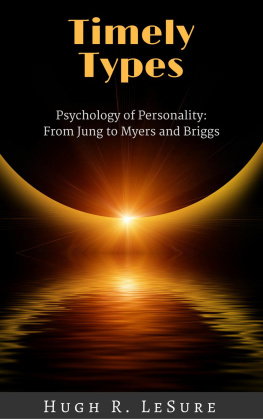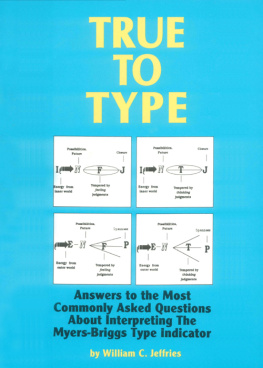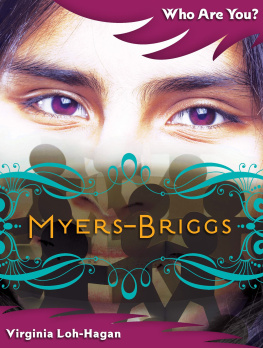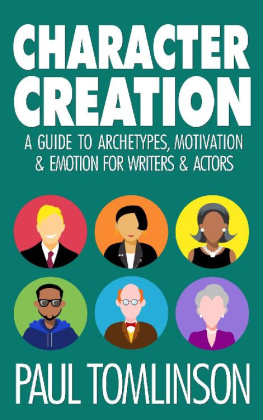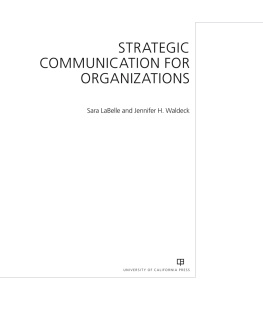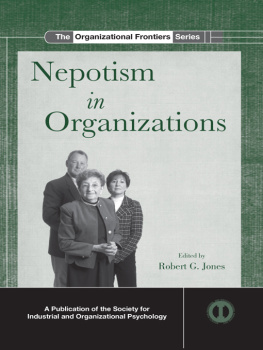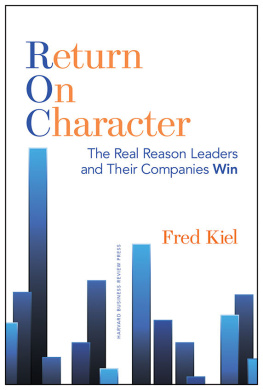The CHARACTER of ORGANIZATIONS
The CHARACTER of ORGANIZATIONS
Updated Edition
Using Personality Type in Organization Development
William Bridges

Reprinted by Davies-Black, an imprint of Nicholas Brealey Publishing, in 2010:
Hachette Book Group | Carmelite House |
53 State Street | 50 Victoria Embankment |
Boston, MA 02109, USA | London EC4Y ODZ |
Tel: (617) 523-3801 | Tel: 020 3122 6000 |
www.nicholasbrealey.com
Special discounts on bulk quantities of Davies-Black books are available to corporations, professional associations, and other organizations. For details, contact us at 888-273-2539.
Copyright 2000 by William Bridges. All rights reserved. No part of this book may be reproduced, stored in a retrieval system, or transmitted in any form or media or by any means, electronic, mechanical, photocopying, recording, or otherwise, without the prior written permission of the publisher, except in the case of brief quotations embodied in critical articles or reviews.
Myers-Briggs Type Indicator, MBTI, and Introduction to Type are trademarks or registered trademarks of the Myers-Briggs Type Indicator Trust in the United States and other countries.
Davies-Black and its colophon are registered trademarks of Nicholas Brealey Publishing.
GORE-TEX is a registered trademark of W. L. Gore & Associates.
The author would like to thank the following for permission to quote from copyrighted works. Page 13: From Managing on the Edge (p. 258) by R. T. Pascale, 1990, New York: Simon & Schuster. Copyright 1990 by Richard Tanner Pascale. Reprinted by permission. Page 87: From Odyssey: From Pepsico to Apple (p. 128) by J. Sculley, 1987, New York: HarperCollins. Copyright 1987 by HarperCollins Publishers. Reprinted by permission.
Printed in the United States of America.
15 14 13 12 11 10 11 12 13 14
eISBN: 978-0-89106-279-0
Library of Congress Cataloging-in-Publication Data
Bridges, William
The character of organizations: using personality type in organization
development / William Bridges.Updated ed.
p. cm.
Includes bibliographical references and index.
Previously published: Palo Alto, CA: Consulting Psychologists Press, c1992.
ISBN 978-0-89106-149-6 (pbk.)
1. Organizational behavior. 2. Organizational changePsychological aspects. 3. Corporate culture. 4. Typology (Psychology). 5. Personality. 6. Myers-Briggs
Type Indicator. I. Title.
302.35dc21
First printing 2000
CONTENTS
FOREWORD
Ask any organization development, human resources, training, or management professional to do a word association with you on the subject of authors. Say the word change and see if Bill Bridgess name doesnt pop up. Also try the word guru. Bill Bridgess name would almost certainly appear on any such list. Far ahead of the curve in both writing and thinking, Bill Bridges establishes concepts that are still in use twenty to thirty years latera rare feat in a field cluttered with self-named organizational interventions, strategies, and methods. So it is with a great pleasure that I contribute this foreword.
While the Myers-Briggs Type Indicator (MBTI) instrument has been a part of my OD/HRD tool kit since 1978, Id had a concern about whether the instrument, along with Jungs theory of personality type, both of which were designed for individuals, could be applied to organizations. I could attest to their value as a way to help people gain self-awareness, understand their conflicts with others, guide their career decisions, and lead from their strengths with confidence.
I could also bear witness to how effectively type could be used with teams. Team members could learn, through the language of type, how they irritated others just by being themselves and how others irritated them just by being themselves. I could analyze how teams communicated both internally and externally, how they experienced change, how they solved problems and made decisions, and how they preferred to be led.
This awareness helped me, and others as well, greatly as we worked with individuals and teams in distress, in exploring their future options, in seeking clarity, and in wanting to develop more effective relationships. What I missed or had only an inkling about was how type could be applied to organizational character. My experience showed me it was possible, but I felt I was on less than solid ground teaching this without some verification. Just as this awareness was crystallizing, along came Bill Bridges, pioneer and paradigm builder, with his book The Character of Organizations: Using Jungian Type in Organizational Development. Again he was in the forefront of new ideas. Today we can say that he wrote the book on organizational character just as we can say that he wrote the book on change. I have been using the insights in The Character of Organizations with assurance and great success for years.
Bill Bridges was the first to publish a framework and an inventory, the Organizational Character Index (OCI), to determine the character of organizations. He also framed ways for knowing just where the different aspects of an organizations character arise.
According to Bills model, we need to consider the founder. Founders often leave their mark, as well as imprint their dream, on the organizations they create, which is especially important in those entrepreneurial organizations started in garages or around dining room tables. How does the founder define and influence the new organizations character?
Second, we can learn from the organizations history how past events have shaped the organizations character and how the various leaders managed during those times. Third, the major occupational group in a given organization (the group whose business is the organizations businessengineers in an engineering organization, for example) can provide more insight into the organizations character.
In addition, we can analyze what markets the organization is in. How do these markets get reflected in its character? How do the organizations customers influence its character? All of these examinations work well with larger and older organizations where the founder is long forgotton or where the organizational history has been disrupted by mergers and acquisitions.
These organizational factors, significant as they are, may be only part of the story. Here is where the OCI offers a broader perspective. Even as it continues to gain further reliability and as validity studies progress, it is an excellent tool with which to start discussions about an organizations character. Results from the OCI can help make concrete what people experience as they work within their own units, other departments, or different parts of the organization with their respective clients, customers, and markets.
The OCI offers a language to help us better understand the organizations strengths and needs. It also allows the organizations character to be articulated in a nonjudgmental way. If it isnt possible to use the OCI with the organization, complete it yourself to gain deeper insights into how to intervene. Doing this will help you work with the organization more constructively and effectivelysomething those of us in this field clearly want.
Next page

